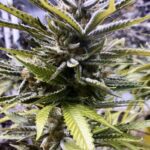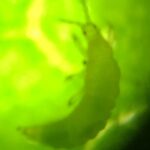Hey Dude, Scotty, Guru & the DGC Family. I have to start this post with a shout out for the un-numbered podcast and for my wife. My wife gets the shout for putting up with me listening to podcasts, reading books about paramagnetism, and spending time on the DGC site while on vacation. The un-numbered podcast earns a shout because within that podcast framework lies the reason why I am glad to have found this community. I believe Dude, Scotty, Guru, et. al., are headed in the right direction regarding organics and more. Their focus on quality results, plus a like kind mind set when it comes to sharing information, are highly valuable attributes to me. This provides all of us with knowledge that we can then put into practice.
I also must acknowledge those in the DGC that just simply want to grow themselves some dank in a couple 5 gallon pots without all this fuss. If I were in that zone, I too would be tossing some ocean forest or coco in 5 gal smart pots, buying a reasonably priced LED light, and a two part solution like Canna. Easy peasy, have a nice day. I’m growing more though. A lot more and I am passionately on a mission.
Since my last post was on building a tea brewer, found here: https://www.dudegrows.com/tea-brewer/ it is only logical that I should scribe out my compost tea recipe. For me, it is hard to write this without 1st providing a large post regarding the science & art of composting, especially vermi-composting (that’s worm poop) and accompany that with relational information on soil building. It’s difficult because that is where the magic begins. I’ll post that later this month.
Humus
All my teas begin with the humus that I compost myself. I’ve gotten that down to an ‘almost science’ – one part green (nitrogen source) and two parts brown (carbon sources) water & oxygen. Here it is in layman’ terms:
Part 1 (Nitrogen) One 5 gallon bucket filled with any combination of grass clippings, vegetable peelings, garden wastes and possibly some raw cow manure.
Part 2 (Carbon) Two 5 gallon buckets filled with a mix of fallen leaves, coffee grounds, hardwood sawdust and hardwood ash/biochar.
Additionally, I add in small amounts of amendments to the start of the composting process. The amendments are also ingredients in my tea recipe itself. This humus is approximately 45% of the tea recipe. If you are not currently composting, you can always buy compost. JUST BUY GOOD COMPOST. Don’t expect to go to Wally World, drop a buck fifty on a bag, and expect the best results.
Worm castings.
I invested about Fifty bucks 4 years ago, on a worm bin system. The secret for producing ‘The Best’ castings is in what you feed the worms. The only food I give my worm employees is either beyond organic stuff coming out of my garden or waste produce from a USDA certified organic retailer whom I have fostered a relationship with over the years. No Garbage in – No garbage out. Worm poop also makes up roughly 45% of the tea recipe. If you’re not vermi-composting, you can buy worm castings. You can generally find local providers for both humus compost and worm castings on Craigslist.
Using just these two ingredients you can brew a compost tea. Place roughly 1 cup each of the humus and worm castings into a nylon stocking, throw it into a five gallon bucket filled with rain water and get to brewing. You will get acceptable results using just the composts. If you want to amp that up a bit, drop some Recharge into your brewer. If you want to turn the volume up to 11 on the 0 – 10 scale, then you should add amendments.
Amendments:
Dude often talks about the ‘mad wizard scientist’ trait he has. He finds enjoyment in mixing bottled nutrients and formulating a fertilizer combination. I get that. The alchemist gene expresses itself in me when I add in these additional dry & wet ingredients to finish off the recipe. I didn’t come by this list haphazardly or on some website. It was gleaned across the last four years from research, trials, errors and guidance from some PhD fellas I know. I too find enjoyment in the effort.
In no particular order, here is the list of the dry ingredients I add in very small amounts: kelp meal, soybean meal, alfalfa meal, langbeinite, greensand, rock phosphate, leonardite, basalt, sea minerals, nutritional yeast and a dash of Yucca. (Of these, only the sea minerals, yeast and yucca are not added in when I start composting for humus).
All of the dry amendments have a purpose, which at the end of the day, comes down to providing all the macro & micro nutrients needed to grow the highest quality plants, food and medicine. When I post about composting and how I build soil I will lay out the reasoning behind each of these dry ingredients.
Additionally, I add three wet ingredients to every batch of tea. These ingredients are worm poop juice, organic unsulphured blackstrap molasses, and organic liquid amino acids. The worm poop juice comes out of the bottom of my worm bin. I really need to get that lab tested to find out just what is in it. I’ve brewed with it and without it. All I can say is when I brew with it, it’s some weird science and phreakin magic because the difference is very noticeable within a few days between the ‘with plant group’ and the ‘without group’. The molasses is a complex carbohydrate that feeds and fosters a friendly environment for microbes. The amino acids chelate minerals like calcium, open plant ion channels allowing for the rapid uptake of nutrients, and helps adjust the pH.
I mentioned in the brewer post that this year I added Recharge to my brews and my results were nuts! I think that occurred because Recharge super charged the number of microbes in the mix, well beyond what even Mother Nature would call normal. But then again, maybe she’s saying “Ahh, ok now we’re getting back to normal” which is why I obtained Brontosaurus like results. I know this is an extensive and somewhat costly list of amendment ingredients. I also realize, its more than likely you won’t go to all the trouble if you are only growing 1, 2 or 6 cannabis girls in your spare bedroom or in a twelve-foot-tall closet. At least now you are armed with this knowledge and can proceed if you choose to make the effort.
Here’s the simple rule of thumb for the amount of tea you need. One cup of tea ingredients mixed together for every 4 gallons of water you have in your brewer. When I brew my 24 gallon batches I use 3 cups of tea in two separate nylon stockings for a total of 6 cups. You can extend your brews by diluting the finished tea up to a 5 to 1 ratio.
One other footnote. When it comes to water for compost tea, do yourself & your plants a huge favor. DO NOT USE CHLORINATED MUNICIPAL WATER. Municipal water almost always contains chlorine dioxide. Chlorine dioxide is in the water to kill off bacteria & microbes that can be harmful. Only trouble is it kills of the good ones too. If you can, use collected rain water for the best results or go buy a water filter for your hose that filters chlorine out. They are around ten to twelve bucks at HD or Lowes.
Love ~ Light ~ Peace ALL







E. Elmo Phudpucker, dropping knowledge like a ninja! LOL
What are your thoughts on worrying about the pH of your compost tea?
Karma – Simple. I don’t worry about pH at all. The more I am figuring the cannabis plant out, the more I am realizing that growing indoors with synthetics is where you have to focus on pH & ppms. I’m growing outdoors in a no till set up. Mother nature does an awful lot of the work for me.
Great info!
The byproduct, chlorite (ClO2-), is a weak bactericidal agent. In water chlorine dioxide is active as a biocide for at least 48 hours
How’s your day and composting going!!??